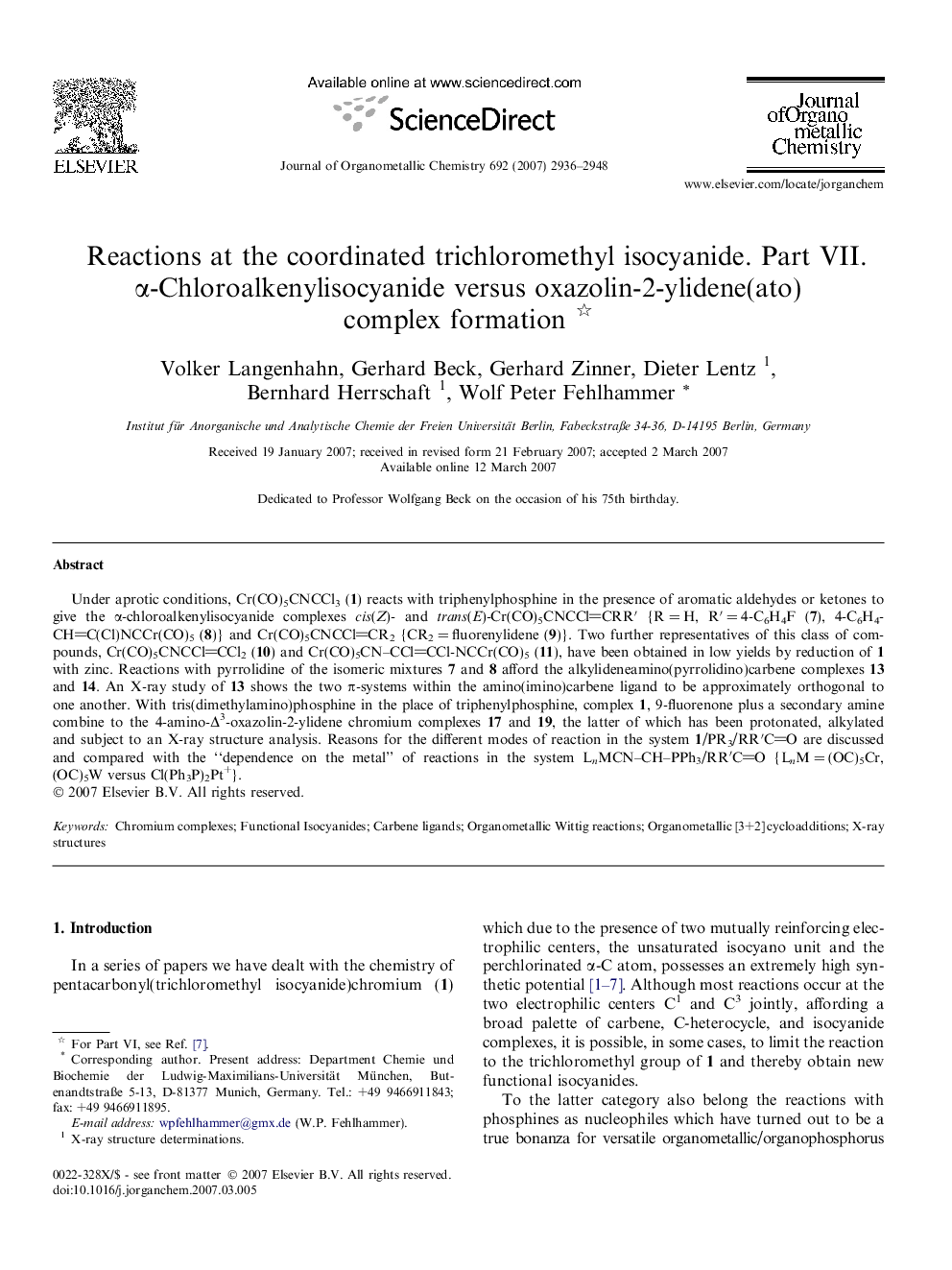| Article ID | Journal | Published Year | Pages | File Type |
|---|---|---|---|---|
| 1327269 | Journal of Organometallic Chemistry | 2007 | 13 Pages |
Under aprotic conditions, Cr(CO)5CNCCl3 (1) reacts with triphenylphosphine in the presence of aromatic aldehydes or ketones to give the α-chloroalkenylisocyanide complexes cis(Z)- and trans(E)-Cr(CO)5CNCClCRR′ {R = H, R′ = 4-C6H4F (7), 4-C6H4-CHC(Cl)NCCr(CO)5 (8)} and Cr(CO)5CNCClCR2 {CR2 = fluorenylidene (9)}. Two further representatives of this class of compounds, Cr(CO)5CNCClCCl2 (10) and Cr(CO)5CN–CClCCl-NCCr(CO)5 (11), have been obtained in low yields by reduction of 1 with zinc. Reactions with pyrrolidine of the isomeric mixtures 7 and 8 afford the alkylideneamino(pyrrolidino)carbene complexes 13 and 14. An X-ray study of 13 shows the two π-systems within the amino(imino)carbene ligand to be approximately orthogonal to one another. With tris(dimethylamino)phosphine in the place of triphenylphosphine, complex 1, 9-fluorenone plus a secondary amine combine to the 4-amino-Δ3-oxazolin-2-ylidene chromium complexes 17 and 19, the latter of which has been protonated, alkylated and subject to an X-ray structure analysis. Reasons for the different modes of reaction in the system 1/PR3/RR′CO are discussed and compared with the “dependence on the metal” of reactions in the system LnMCN–CH–PPh3/RR′CO {LnM = (OC)5Cr, (OC)5W versus Cl(Ph3P)2Pt+}.
Graphical abstractThe one-pot reactions of Cr0(CO)5CCl3, phosphines and ketones proceed via intermediates which due to their double nature as phosphorus and metallo-nitrile ylids either cause Wittig carbonyl-(isocyano)methyleneation of or undergo [3+2] cycloaddition with the ketone. Which course is adopted depends on the phosphine (PPh3 versus P(NMe2)3) [or the metal as demonstrated for the related system [PtII]–CN–CH–PPh3/RR′CO].Figure optionsDownload full-size imageDownload as PowerPoint slide
